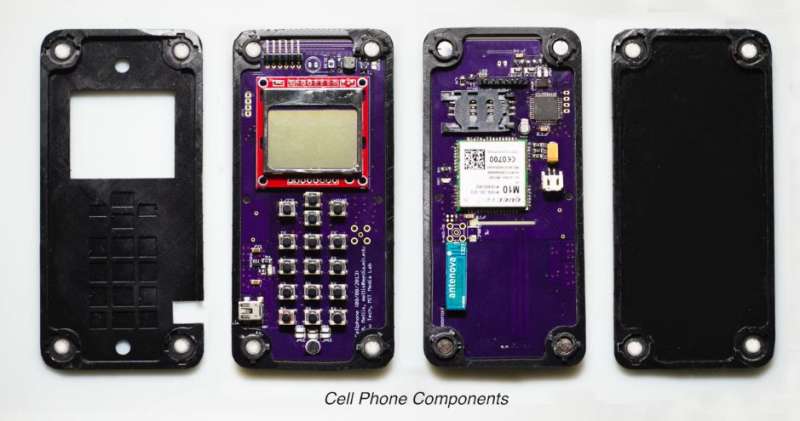August 23, 2016 weblog
Self-assembling phone as sign of respect for natural systems

(Tech Xplore)—What is a factory? One easy description might be that a factory is a place where workers stand in line and put components together. What is an MIT dreamer? Someone like Skylar Tibbits who is daring to take the factory process out of making phones.
Tibbits is a research scientist in MIT's Department of Architecture. He set up a lab to experiment with material that can grow on its own. The current state of manufacturing and natural systems are worlds apart and he would like to bring those worlds closer together.
Co.Design's Meg Miller reported that since its beginnings, this Self-Assembly Lab has received funding to experiment with a series of materials that can be "programmed" to self-construct.
Build thyself. That is what MIT's Self-Assembly Lab is telling phones to do. The Lab is designing parts and process so that the parts snap together in minutes. Miller described at what stage his research is at present.
"Tibbits and his lab have a rough prototype for the self-assembled cell phone. It's composed of six parts that assemble into two different phones."
They put the parts in a kind of tumbler and toss them around until they click together. Hard to imagine? Miller said, "The components also have a series of lock-and-key mechanisms that allows the proper connection between parts, and block the wrong ones." How do the parts actually stick? They are using magnets of varying polarity, she said. Only parts that are supposed to connect are strongly attracted to each other.
"Six separate pieces are placed in a tumbler, which spins at varying speeds until the elements click into place with magnets, creating two phones. The pieces are designed like a puzzle, only matching up with certain other parts, so there's only one possible outcome," said CNNMoney.
How practical is this idea? Self-assembly might be a method of automation at a relatively low cost. Miller made the point that "most factories already use tumblers for sifting through materials and separating out debris, there wouldn't be a lot of added cost for equipment."
Also, they could play with other tumbler speeds or throw in more parts in the mix.
This is a refreshing concept but Tibbits is not stopping there. He had more to say in Co.Design.
"'Right now the phone is predetermined, and we're using this process to assemble that phone,' said Tibbits. 'But imagine you take a circuit board and you have different logical building blocks and those logical building blocks can be tumbled around—you can have different functionalities.'"
CNNMoney made the observation that Google's Project Ara tinkered with a modular concept of different components such as sensors and cameras being swapped out. "Self-assembly could add a touch of serendipity into the designs."
The Self-Assembly Lab page said that it is working with academic, commercial, nonprofit, and government partners, collaborators, and sponsors to make its self-assembling future a reality.
© 2016 Tech Xplore




















